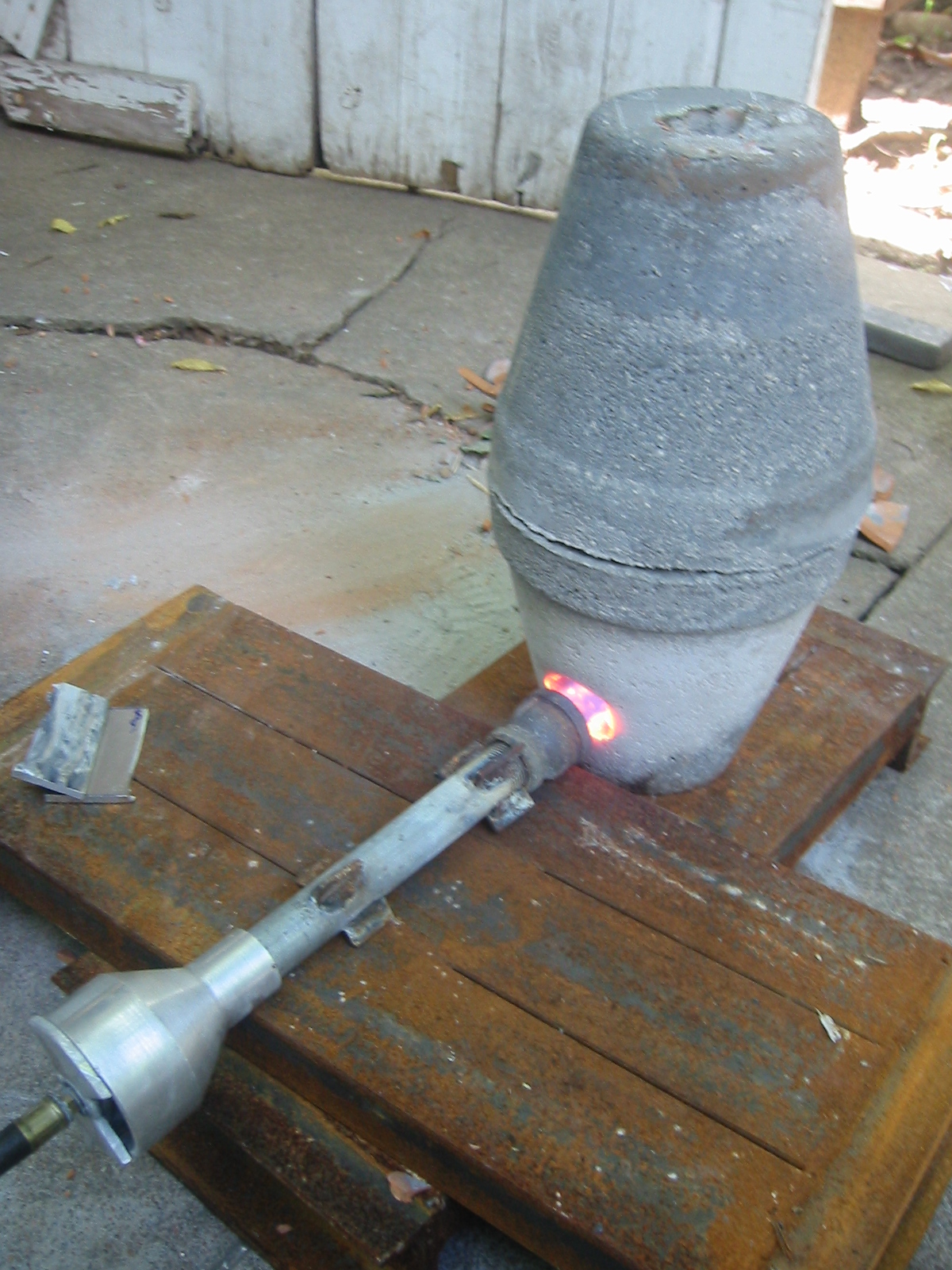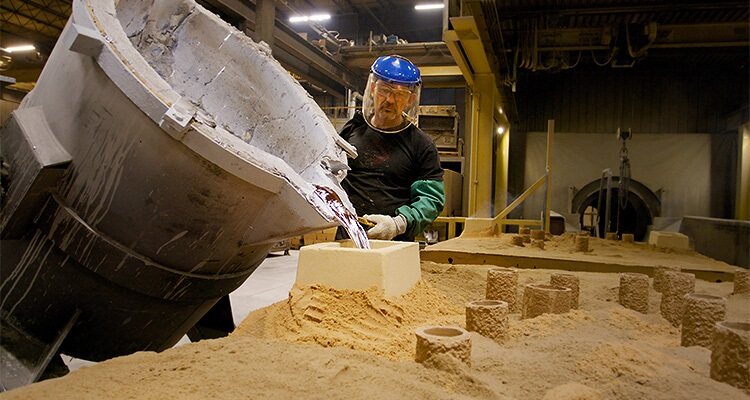5 things you should know about Aluminum Foundry in manufacturing
Wiki Article
Recognizing the Value of Aluminum Foundry in the Aerospace and Automotive Industries
Aluminum foundries are indispensable to the aerospace and auto markets. They supply essential lightweight elements that add to total efficiency and performance. The special properties of aluminum offer unique benefits in manufacturing. As improvements in technology and lasting techniques arise, the duty of these foundries is developing. Understanding these elements raises crucial questions regarding the future of transportation and technology. What ramifications do these growths hold for the industries at large?The Duty of Aluminum Foundries in Production Lightweight Parts
Aluminum foundries play a critical role in the aerospace and automobile markets by producing light-weight parts that enhance performance and fuel performance. The need for lighter products has surged as suppliers seek to reduce overall automobile weight, resulting in enhanced fuel economic situation and reduced exhausts. Aluminum's one-of-a-kind residential properties, including high strength-to-weight proportion and rust resistance, make it an excellent choice for numerous applications.Components such as engine blocks, transmission housings, and architectural elements gain from aluminum's malleability and simplicity of casting, supplying the needed strength while reducing weight. Furthermore, aluminum's recyclability lines up with lasting production techniques, further driving its fostering in these industries. Foundries utilize accurate techniques to ensure excellent product residential properties, facilitating technologies in layout and innovation. Inevitably, aluminum foundries are necessary in fulfilling the developing needs of aerospace and auto industries, adding to improvements in safety, effectiveness, and environmental duty.
Advanced Casting Techniques Made Use Of in Aerospace and Automotive Applications
In the aerospace and automobile industries, progressed casting techniques have come to be necessary for improving efficiency and effectiveness. Precision spreading techniques, along with light-weight alloy advancements, make it possible for the production of elements that fulfill strict industry criteria. Furthermore, the combination of additive manufacturing further revolutionizes design opportunities, enabling greater modification and complexity partly.Accuracy Casting Methods
While sectors such as aerospace and vehicle increasingly demand high-performance parts, accuracy casting techniques have actually become essential methods to satisfy these needs. These methods, including financial investment casting and die casting, offer phenomenal dimensional precision and surface coating, essential for components subjected to strenuous operational conditions - Aluminum Foundry. Investment casting allows for complex layouts and complex geometries, enabling the manufacturing of light-weight yet sturdy components. Pass away spreading, on the various other hand, assures high volume manufacturing with regular high quality and reduced preparations. Both methods assist in the reliable use products, minimizing waste and enhancing sustainability in producing procedures. As the demand for ingenious solutions proceeds to expand, accuracy spreading methods play a crucial function ahead of time the capacities of aluminum foundries within these vital industriesLight-weight Alloy Technologies
As the aerospace and automobile sectors go for improved efficiency and performance, innovations in light-weight alloys have come to be increasingly substantial. These alloys, which consist of progressed aluminum-lithium and magnesium-based make-ups, supply superior strength-to-weight ratios, enabling suppliers to generate parts that are both sturdy and light-weight. The fostering of these products not just improves fuel performance however likewise minimizes greenhouse gas emissions, straightening with worldwide sustainability objectives. Advanced spreading strategies, such as die casting and investment casting, have been optimized to work with these lightweight alloys, enabling complex layouts and complicated geometries. This adaptability boosts the capability and performance of parts made use of in vital applications, from airplane structures to auto frameworks, strengthening the function of aluminum foundries in driving industry technology.Additive Manufacturing Integration
Additive manufacturing has actually emerged as a transformative pressure in the aerospace and automobile sectors, seamlessly integrating with innovative spreading methods to enhance production abilities. This assimilation enables the creation of intricate geometries that conventional techniques battle to attain, considerably boosting design adaptability. By incorporating additive procedures with aluminum casting, makers can optimize weight decrease while preserving architectural honesty. This harmony likewise cultivates rapid prototyping, making it possible for quicker versions and minimizing time-to-market for new components. Furthermore, making use of additive production can decrease material waste, straightening with sustainability goals in both sectors. Consequently, the collaboration in between these innovative methods is leading the way for cutting-edge remedies and efficiencies that redefine production in aerospace and auto applications.Benefits of Aluminum as a Product in High-Performance Parts
Aluminum offers significant advantages in high-performance components as a result of its lightweight framework, which adds to improved gas performance and improved performance in both aerospace and vehicle applications. Additionally, its rust resistance residential or commercial properties guarantee long life and durability, making it a perfect selection for elements subjected to extreme settings - Aluminum Foundry. These advantages placement aluminum as a leading material in the production of innovative high-performance componentsLightweight Framework Benefits
When considering products for high-performance parts in aerospace and automobile industries, the lightweight structure of aluminum uses substantial advantages. Its low thickness enables for the creation of components that minimize general car weight, improving fuel efficiency and efficiency. This decrease in weight contributes to lower exhausts and improved functional expenses, making aluminum an eco friendly selection. In addition, lighter frameworks make it possible for far better handling and acceleration, important variables in competitive racing and advanced aircraft style. The capacity to create elaborate forms without compromising stamina even more boosts aluminum's appeal, allowing producers to introduce while meeting rigid safety standards. On the whole, the lightweight nature of aluminum supports the market's change in the direction of a lot more efficient and high-performing automobiles.Rust Resistance Characteristics
The premium deterioration resistance of aluminum makes it an ideal selection for high-performance parts in both aerospace and automobile markets. This residential or commercial property is important, as components are frequently subjected to extreme environmental problems, including dampness, salt, and severe temperatures. Aluminum's all-natural oxide layer serves as a safety barrier, avoiding the underlying steel from corroding, therefore extending the life-span of critical components. In addition, aluminum alloys can be customized to enhance corrosion resistance, permitting for specific applications popular settings. This strength lowers upkeep expenses and boosts security, making aluminum a favored material for components such as engine components, structures, and structural aspects. Ultimately, the deterioration resistance of aluminum adds significantly to the general reliability and performance of lorries and aircraft.Developments Driven by Aluminum Foundries
As sectors increasingly prioritize lightweight materials for improved performance, developments driven by aluminum foundries have become an essential force in both aerospace and vehicle industries. These foundries go to the center of establishing advanced aluminum alloys and casting methods, which improve mechanical buildings and minimize overall weight. Enhanced die-casting techniques, such as high-pressure die spreading and capture casting, make it possible for the manufacturing of intricate shapes with exceptional surface area finishes, attending to complex engineering needs.Furthermore, the assimilation of automation and robotics in aluminum foundries this article has structured manufacturing processes, enhancing performance and minimizing preparations. The fostering of additive production strategies, consisting of 3D printing with aluminum materials, has actually likewise opened up brand-new avenues for fast prototyping and modification. These innovations not just add to the performance and sturdiness of parts yet likewise boost the design adaptability for suppliers, permitting more cutting-edge and efficient automobile designs in both aerospace and vehicle applications.
Environmental Benefits of Utilizing Aluminum in Manufacturing
Many products are used in manufacturing, aluminum stands out for its considerable environmental benefits, specifically in the aerospace and auto sectors. Its see this site light-weight nature contributes to boosted gas efficiency in vehicles and airplane, resulting in decreased greenhouse gas exhausts. Additionally, aluminum is very recyclable; around 75% of all aluminum ever produced is still being used today. This recyclability minimizes power consumption, as recycling aluminum requires just 5% of the power needed for primary manufacturing.Aluminum's lengthy lifespan and resistance to corrosion decrease the requirement for frequent substitutes, thus reducing waste generation. Making use of aluminum in making not just supports sustainable techniques however also aligns with the expanding global emphasis on minimizing carbon impacts. As industries endeavor for greener solutions, integrating aluminum is a calculated option that promotes environmental duty while meeting the extensive demands of aerospace and auto applications.

Quality Control and Screening in Aluminum Foundries
Efficient top quality control and rigorous screening are vital in aluminum foundries to ensure the production of high-performance elements for aerospace and vehicle applications. These procedures start with the cautious choice of raw products, ensuring they fulfill details chemical and physical residential or commercial properties. Foundries implement rigorous monitoring systems throughout the production process, including temperature control and mold stability checks, to stop defects.Examining approaches, such as spectrometry and mechanical screening, verify that the aluminum alloys possess the required strength, ductility, and fatigue resistance. Non-destructive testing techniques, like ultrasonic and X-ray evaluations, are used to determine inner imperfections without damaging the parts.

Future Trends in Aluminum Foundry Modern Technology for Transport Industries
Increasingly, innovations in aluminum foundry technology are shaping the future of the transport industries, especially in aerospace and vehicle industries. Developments in automated spreading procedures are boosting effectiveness and accuracy, decreasing manufacturing times while lessening waste. Methods such as 3D printing and additive production are obtaining traction, allowing for the creation of complex geometries that maximize weight and efficiency.In addition, the look what i found integration of smart technologies and information analytics is promoting real-time tracking of foundry operations, enhancing top quality control and consistency. As sustainability becomes a concern, recycling efforts are anticipated to grow, enabling for the reuse of aluminum scrap, which is both affordable and eco-friendly.
The advancement of sophisticated alloys will allow suppliers to produce lighter, stronger parts, directly adding to improved fuel performance in vehicles. Overall, these patterns are readied to change aluminum foundry practices, keeping pace with the advancing needs of the transportation industries.
Frequently Asked Concerns
Exactly How Do Aluminum Foundries Ensure Security for Workers?
Aluminum foundries prioritize worker safety by carrying out extensive training programs, maintaining proper air flow systems, using personal safety equipment, conducting regular safety and security audits, and adhering to market regulations, developing a safe environment for all staff members.What Are the Typical Issues in Aluminum Castings?
Common flaws in aluminum spreadings consist of porosity, shrinking, additions, and surface flaws. These concerns can occur from poor mold and mildew layout, inadequate putting strategies, or contamination, eventually impacting the top quality and efficiency of the last product.How Do Aluminum Foundries Deal With Recycling of Scrap Products?
Aluminum foundries effectively manage scrap material recycling by collecting, sorting, and melting down aluminum waste. This procedure reduces ecological influence, lowers manufacturing expenses, and ensures a lasting supply of basic materials for future spreading operations.What Qualifications Should Aluminum Foundries Have?
Aluminum foundries should possess accreditations such as ISO 9001 for top quality management, ISO 14001 for environmental monitoring, and specific aerospace or auto criteria like AS9100 or IATF 16949 to ensure conformity and quality in production procedures.How Does Climate Effect Aluminum Casting Processes?
Weather condition substantially affects aluminum casting procedures by affecting temperatures and moisture degrees. High humidity can lead to moisture-related problems, while severe temperature levels might modify steel residential properties, eventually impacting the quality and consistency of the last cast items.Report this wiki page